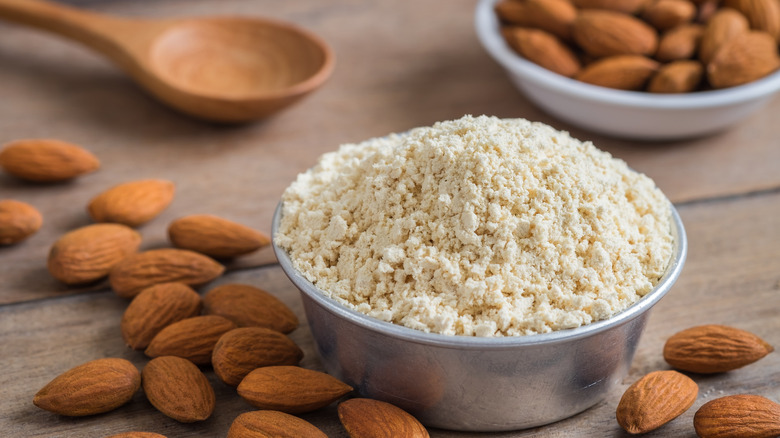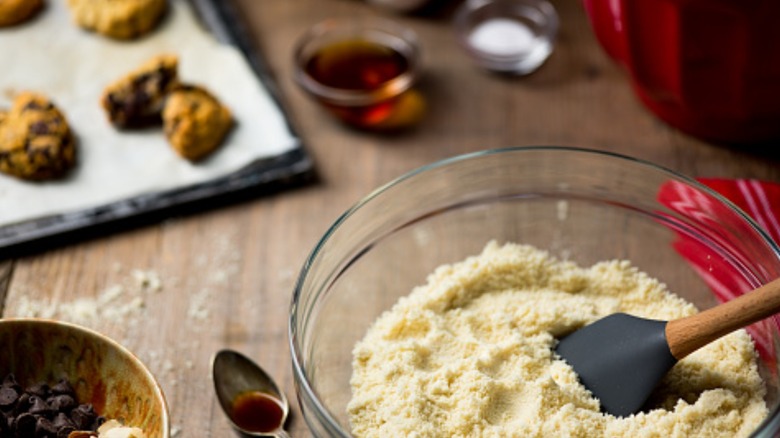Almond Flour Is The Key For Moist Gluten-Free Bakes And Cakes
With around one-quarter of all Americans following a gluten-free diet, the market for good wheat flour substitutes for baking is exploding. Some companies, like King Arthur Baking Company and Cup4Cup, offer gluten-free flour blends that can be used one-to-one in traditional recipes. But if you want perfectly moist baked goods every single time, almond flour could be your new best friend.
Like most elements of baking, the reason almond flour is so successful is a matter of chemistry. Primarily, almonds are high in fat, which prevents water from being absorbed — leaving your final bake with an elevated moisture content. This is why many recipes for sweets call for so much butter. Fats also help suspend air in the batter, which produces a lighter and spongier final texture.
The fact that almond flour is naturally gluten-free also helps promote tenderness, though this can come at the expense of how well your pastries and cakes will rise in the oven. In baking, gluten provides structure for air, fats, and proteins, but can also give a chewy mouthfeel. Shorter gluten strands — or, in the case of almond flour, none at all — lessen or eliminate the possibility of chewiness.
But because almond flour does not provide the same structure as wheat flour, bakers need to be careful when substituting it. Recipes like these almond flour chocolate chip cookies have already accounted for this — but if you're adapting a recipe, there are important additions and tweaks you'll have to make.
How to successfully use almond flour for the most tender bakes
Almond flour is very simple: In reality, it's just ground nuts. Too coarse of flour will produce gritty cakes, so almonds need to be ground very finely and sifted well for them to earn their place as one of the best flours in the kitchen. But because almonds contain no gluten, bakers may need to add extra steps to ensure their pastries take on a silky, tender texture.
Gluten itself is not a leavening agent, but the matrix-like structure it creates helps support the rising action of ingredients like yeast, baking soda, and eggs. When using gluten-free options like almond flour, bakers can run the risk of their cakes and cookies spreading too much. At home, you might need to add extra eggs, which provide additional structure.
Depending on the recipe, you might also need to compensate for the added moisture in almond flour batters. Adding extra flour — in small amounts at a time, while paying close attention to how the texture is changing — could be necessary. Don't get tripped up, though: Almond flour is naturally thicker than wheat flour, but since it retains moisture, resist the urge to adjust the consistency with more liquid.
Because the properties of almond flour can change even with the ambient temperature in the kitchen, deploying almond flour for the first time could involve some trial and error. But once you master it, almond flour will absolutely elevate your baking game.

